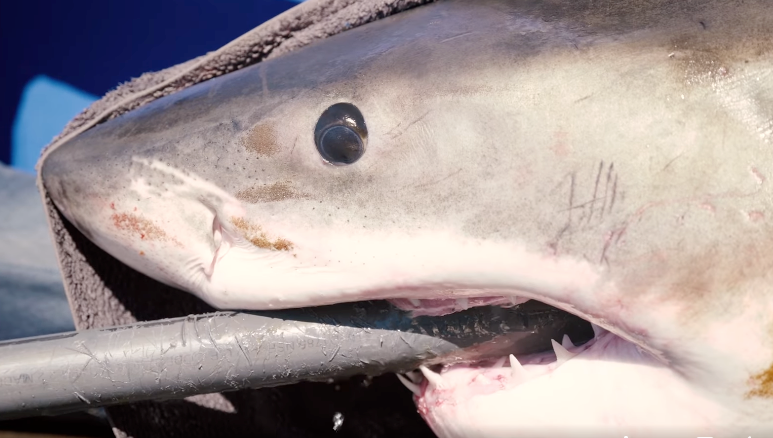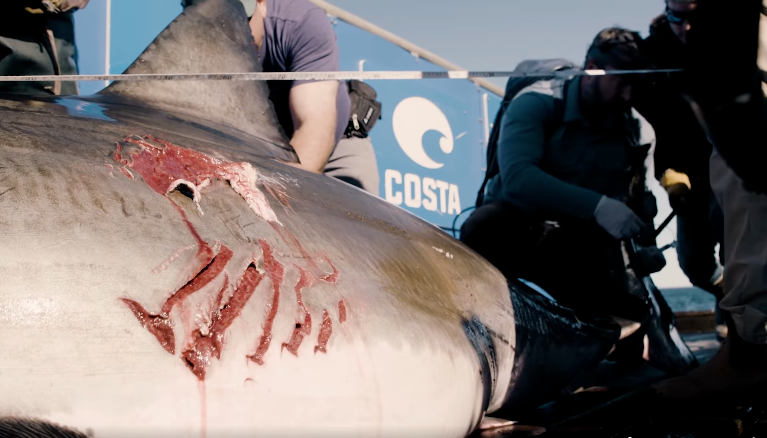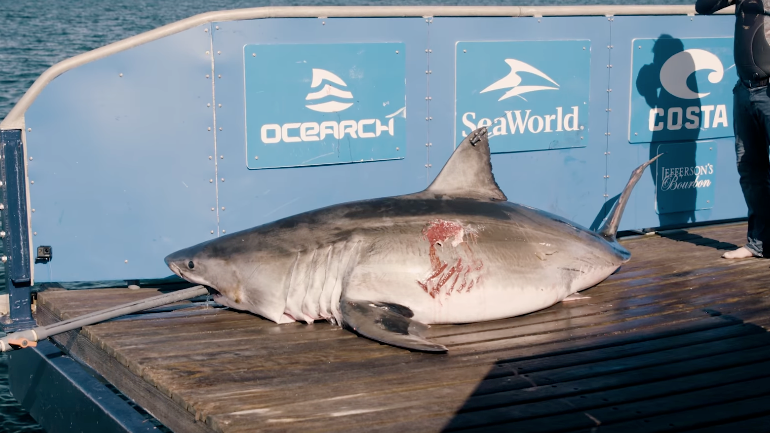
A huge great white shark has been spotted 43 miles off the northern Florida coast.
The 1,264-pound (573 kg) beast – named Maple – was spotted by the non-profit ocean research group OCEARCH near St George’s Island.
On 6 March, OCEARCH wrote on Facebook that “white shark Maple pinged in this morning about 70km (43 miles) southeast of St. George Island, Florida in the Gulf Of Mexico. Over the past two seasons Maple has spent much of her winter in the Gulf of Mexico”.
The travel log for the 11-foot seven-inch (3.5 metres) shark states that she was tagged on 14 September 2021 at Ironbound Island in Nova Scotia, Canada. The shark was named after the maple leaf, the icon on the Canadian flag.
Maple has spent the past few weeks in the Gulf of Mexico after having journeyed up and down the East Coast since being tagged. The shark has a wound on the left side of her body, which researchers think was inflicted by a larger shark attempting to instil a sense of dominance with a strike that wouldn’t be fatal.
“Maple is a sub-adult female, our 2nd shark sampled, tagged, and released,” the OCEARCH site states.
The tracker for an additional great white shark – Tancook – pinged on 7 March off the eastern coast of northern Florida in the Atlantic Ocean. Tancook is nine feet nine inches long (3 metres) and weighs 715 pounds (324 kg).

According to OCEARCH, “a ‘Ping’ happens when an animal tag breaks the surface of the water, sending data”.
The shark has been tracked up and down the East Coast, as far north as the Gulf of St Lawrence in Canada and as far south as the coast off of Orlando.
“Tancook means ‘facing the open sea’ to the local indigenous Mi’kmaq people of Nova Scotia. We met Tancook off West Ironbound Island, which is just south of Tancook Island, a place that was once a summer fishing ground for the indigenous people,” OCEARCH states on its site.

The tracker for a third white shark – Rose – pinged just after 11am on Thursday 9 March. Rose is 10 feet five inches long (3.2 metres) and weighs 600 pounds (272 kg).
She was first tagged on 4 October 2020 in Lunenburg, Nova Scotia, and “named after Rose Bay not far from where she was tagged,” OCEARCH says.
Female great white sharks tend to be larger than the males. They can become as much as 16 feet long (4.9 metres), while males can become as long as 13 feet (4 metres).

“The biggest great white sharks can reach up to 20 feet long, but most are smaller,” the Smithsonian states.
The pings locating the sharks near the Florida coast come as the state prepares for the arrival of spring break travellers to its shores.

Brent Winner, a scientist at the Florida Fish and Wildlife Conservation Commission (FWC), says on the agency’s site that “it’s very important for people who visit Florida waters to be aware of their surroundings, understand the relative risks, and be educated on various shark issues such as behavior, biology and fisheries”.

The FWC adds that sharks and their ancestors have swum in Florida waters for more than 400 million years.
Sharks in Florida tend to move towards the shore and north in the spring and summer and away from the shore and south in the autumn and winter.
“This pattern explains why shark activity is at its peak in Florida waters during April through October, which coincidentally, is also the time period that humans are more likely to be in the water. Yet shark bites still remain very rare,” the FWC states. “Humans are 30 times more likely to be struck by lightning in Florida than to be bitten by a shark. Experts agree that the increase in the number of shark bites in recent years is more related to an increase in human visitors than to an increase in shark populations or activity.”
FWC notes that humans pose more of a threat to sharks than sharks endanger humans.
On average, fewer than ten people die from shark bites annually while about 100 million sharks are killed by fisheries each year.







